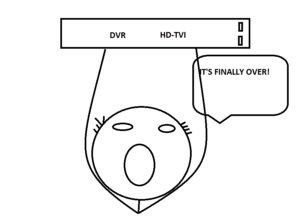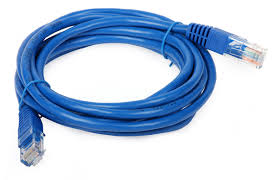VCR to IP – In Series
Surveillance systems date as far back as 1942. We’re not going back that far. But;
Remember these?
They recorded to this;
Coming back to you? No? This may refresh your memory;
We’re as glad those days are gone as you are. Not as happy as Philip Ob Rey , who turns old tape into some of the craziest artwork I’ve seen… but still pretty happy.
Surveillance back in those days was cutting edge, state of the art stuff. It wasn’t ideal, but it was the best we had and we made it work. When we weren’t digging ourselves out from under a mess of magnetic tape. And forgetting to change our cassette everyday.
Fast forward to 2017. If you’re using a cassette you might be a while. The rest of us will enjoying pictures of video tape sculptures while we wait.
Caught up? Excellent. Let’s continue.
There are always competing products in the electronics world. We are always testing the waters and looking for the things that not only will do the job, but keep doing the job for as long as possible. Just a few short years ago, the Surveillance Camera industry made that incredibly hard to do.
So we began the unenviable task of sifting through the new technology. And we tested. And we tried. We researched and read and experimented. We learned that tearing your hair out is not supposed to be a literal term.
Persistence paid off. Folically challenged but victorious none the less, our technology lead stepped out of his office after weeks of self imposed segregation and announced that we would be using TVI technology over any other. It was a heroic display.
I told you I was a terrible artist.
The TVI upgrade went on for a few years, but as all technology does we found that the images and connections stopped meeting the needs of our clients. Some required better zoom or clearer pictures. It was time to upgrade again.
This time the decision was easier. IP Cameras, by that time, had become the most cost efficient and reliable security solution for surveillance.
IP means internet-protocol. The cameras, instead of being hooked in through Coax cable, are networked to the NVR. It works a lot like a router or a switch. Because the data transfer rates of the CAT5 wire is so good, IP is capable of displaying a picture quality previous systems can’t duplicate.
IP also eliminates the need for a local power source.
Power is run to the cameras through the same Ethernet cord the video is transported with. They call that POE, or Power Over Ethernet. There are so many articles on how this works I can’t pick just one, so instead I’ll provide this , which is a plug-and-play google search. Cause that’s what we do. Simplify.
Most of you know what that is, but in the off chance you’ve been living under a rock for the last 20 years, that’s an ethernet cord.
Since being released, IP cameras have been the camera of choice for technology advancement in surveillance. HDMI video is better quality and more reliable through the CAT5 wire, and the remote connections for observing video are much better as well.
IP also carries wireless options, although we don’t recommend those cameras unless you’re running a very robust or dedicated network. Internet connections and local networks, while lightyears ahead of where they were just a few years ago, are still not reliable enough to rely on for security.
If you’re looking for surveillance security, or have question about any other security options we provide, feel free to reach out. Call us, visit our website or drop me a message on our facebook page.






No comments yet.